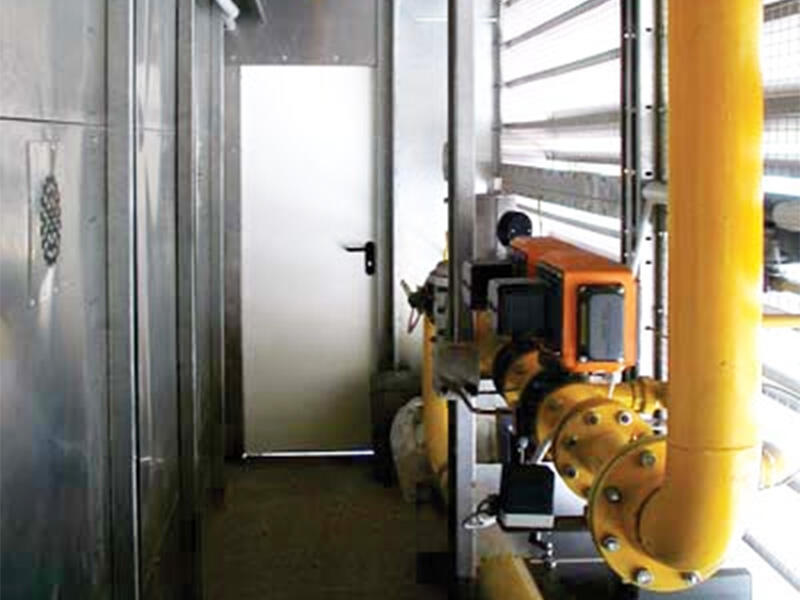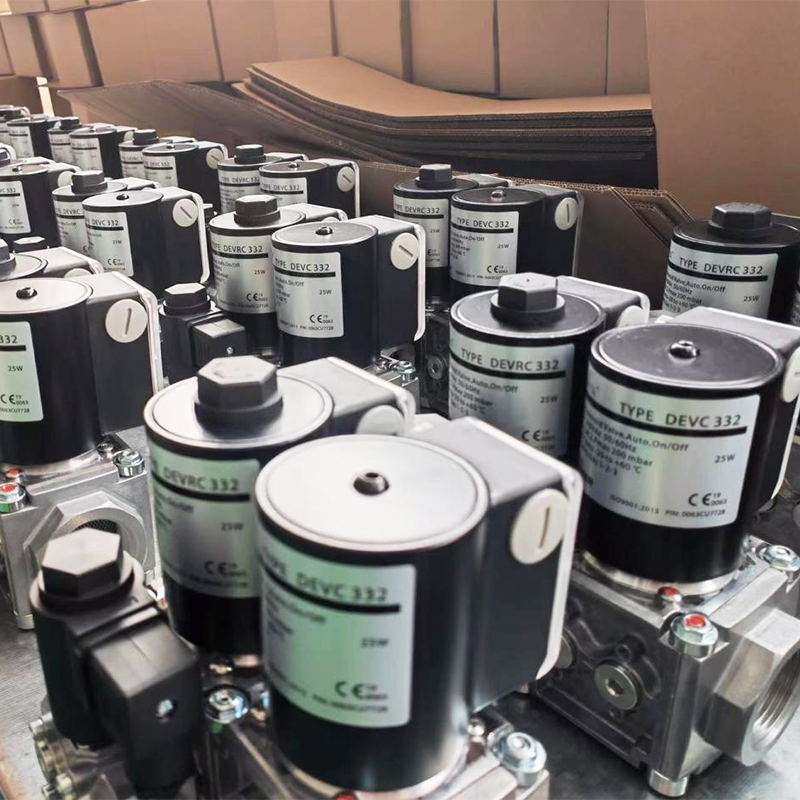Understanding How Burner Technology Shapes Ceramic Quality
Precision in Temperature Control and Thermal Stability
Getting temperature control just right during ceramic firing matters a lot because every item needs certain heat levels to get those important characteristics like strength and lasting power. The newer burner systems available today really help manufacturers adjust temperatures precisely, making things much more stable thermally speaking. When this happens, problems we often see like warped shapes or cracks are avoided, something that definitely keeps ceramic pieces from falling apart over time. Research actually shows that keeping temperatures steady throughout production improves how well these materials hold up mechanically. Various lab tests and industry reports have consistently pointed out how better control during firing directly results in higher quality end products across different types of ceramics.
Uniform Heat Distribution for Consistent Results
Getting even heat throughout a ceramic piece matters because every section needs similar treatment to create something consistent at the end. Burner systems designed with better air circulation help cut down on those hot spots and cold areas inside kilns, and this makes a real difference in how strong and uniform the finished ceramics turn out. Industry reports indicate that when kilns have these improved burner setups, they tend to produce around 30% fewer flawed items compared to older models. Fewer defective pieces means happier customers and less wasted material over time, so investing in proper heating solutions pays off for ceramic manufacturers looking to improve both quality control and bottom line results.
Impact on Glaze Adhesion and Surface Finish
Choosing the correct burner system makes a real difference when it comes to how well glazes stick to ceramic surfaces. Without proper adhesion, problems like flakes coming off or peeling away from ceramics happen, which definitely affects the overall quality of finished products. When temperatures go up and down during firing, this messes with the final look of the ceramic piece. That's why having burners that maintain steady heat throughout the process matters so much for getting those nice smooth glaze results we all want. Studies show better sticking power from good burner tech actually makes ceramic items look more attractive. People shopping for ceramics tend to pick what looks best first, so manufacturers need to pay attention to these details if they want their products to stand out on store shelves.
Types of Ceramic Kiln Burners: Efficiency and Applications
High-Efficiency Industrial Gas Burners
Industrial gas burners that deliver high efficiency play a major role in running ceramic kilns because they can keep temperatures stable at very high levels without burning through excessive fuel. Many modern models come equipped with advanced tech that gets the most out of every drop of fuel, which translates into real money saved for factories producing ceramics on a large scale. For anyone making ceramics where temperature consistency matters for product quality, these burners make all the difference. What's interesting is how these systems adapt to different kinds of fuels. Some work better with natural gas while others handle propane or even biofuels. This gives plant managers options when looking at both cost and environmental impact factors. Manufacturers appreciate this flexibility as it allows them to select fuel sources that fit their budget constraints while still meeting increasingly strict emissions standards across the industry.
Oil Burners with Heat Exchangers for Energy Recovery
Heat exchangers attached to oil burners have really changed how we think about energy recovery, especially when it comes to those intense ceramic firing processes that run around the clock. These systems grab all that wasted heat and put it back to work, which cuts down on overall energy usage and saves money at the same time. For manufacturers looking to balance their bottom line with green initiatives, this kind of technology makes perfect sense. Plus, they tend to last longer than older models and actually cut down on harmful emissions, something that matters a lot these days with all the talk about climate change. According to recent studies from manufacturing associations, companies that install these heat recovery systems typically see around 30% less energy consumption. While installation does require some upfront investment, most businesses find that the long term savings make it worth the trouble, especially as environmental regulations continue getting tighter across the industry.
Hybrid Systems for Versatile Firing Needs
Hybrid burners bring real flexibility to ceramic manufacturing when they mix multiple fuel sources in one setup. Manufacturers find this really helpful when they have to change how they operate because markets shift around or supplies get tight. These systems let them fine tune the firing process so they can handle all sorts of ceramics from tableware to industrial components without sacrificing product quality. Industry experts point out that these hybrid setups boost kiln performance while cutting down on those annoying production stoppages. The ability to switch between different firing methods makes these systems essential equipment for today's ceramic plants that want to stay competitive across changing market conditions.
Optimizing Combustion for Superior Product Outcomes
Balancing Fuel-Air Ratios for Reduced Defects
Getting the right mix of fuel and air matters a lot in combustion processes if we want to cut down on soot and leftover fuel that affects product quality. When manufacturers get this balance right, they end up with fewer defects in their products something that really counts for businesses in fields where precision matters most, think ceramics work or fine metal fabrication shops. Another benefit? Cleaner burning means less pollution coming out of the smokestacks, so factories stay compliant with those ever tightening environmental rules. Real world data backs this up too. Take ceramic tile makers for example many report cutting defect rates almost in half after tweaking their combustion systems. These kinds of results show why getting the fuel air ratio just right isn't just about saving money it's actually essential for keeping products consistent and meeting customer expectations.
Minimizing Thermal Shock and Oxidation Issues
Thermal shock remains a big problem during the firing process for ceramics, causing cracks and other defects that ruin otherwise good pieces. When combustion isn't controlled properly, this thermal shock gets worse, so getting those burners working right makes all the difference. Manufacturers who tackle thermal shock issues protect their products from damage while saving money on broken goods. Ceramic makers who pay attention to these temperature swings tend to see fewer rejects and better bottom lines according to what many factory managers report. Good combustion control isn't just about keeping things running smoothly it's actually one of the most important factors affecting both product quality and how long those ceramic items will last before needing replacement.
Maintenance and Burner Performance Sustainability
Routine Cleaning to Prevent Inconsistent Firing
Keeping burners clean through regular maintenance makes all the difference when it comes to consistent firing conditions needed for good product quality. When companies skip their cleaning routines, residue builds up inside the burners over time. What happens then? The firing becomes uneven, and this shows up in the final products as inconsistencies that customers definitely notice. For businesses making things that depend on precise heat control, these variations can really hurt both reputation and bottom line. Good maintenance plans need to match how hard the equipment actually works day to day. Industry experience tells us that sticking to a proper cleaning schedule keeps everything running smoothly while extending the life of expensive burner systems. Most plant managers know from bitter experience that cutting corners on cleaning leads to bigger problems down the road, so consistent attention to burner maintenance remains a non-negotiable part of any serious production operation.
Upgrading Components for Long-Term Reliability
Upgrading to better quality burner parts makes good business sense if companies want to keep their operations running smoothly and cut down on maintenance related downtime. When businesses install modern components, they get fewer interruptions plus improved efficiency for demanding applications such as oil burners or industrial gas systems. Looking at the bigger picture, focusing on reliable equipment goes further than just keeping things working properly it actually helps create more predictable manufacturing schedules. Customers tend to trust suppliers who consistently meet delivery deadlines because they know what to expect. Industry experts regularly point out that investing in newer burner tech pays off over time by reducing expenses and making combustion processes work better. Companies that take this forward thinking approach typically see real improvements in both cost savings and environmental impact, which matters increasingly in today's market.
FAQ
Why is temperature control crucial in ceramic firing?
Temperature control is crucial because it ensures that ceramics achieve desired qualities like hardness and durability. Proper control helps prevent issues such as warping and cracking which can compromise product quality.
How does burner technology affect glaze adhesion on ceramics?
Efficient burner technology maintains stable temperatures which help enhance glaze adhesion, preventing flaking or peeling and improving the aesthetic appeal of ceramic pieces.
What role do hybrid burner systems play in ceramic production?
Hybrid burner systems offer versatility by allowing the combination of different fuel types, enabling producers to adapt to market demands and optimize their processes without compromising product quality.
How can maintenance affect burner performance and product quality?
Regular maintenance, especially routine cleaning, prevents residue build-up in burners. This helps maintain consistent firing conditions, crucial for product quality, and extends equipment longevity.
What benefits do oil burners with heat exchangers bring to ceramic firing?
Oil burners with heat exchangers recover waste heat to boost energy efficiency, reduce operational costs, and align with sustainability goals by lowering emissions in high-demand firing operations.
Table of Contents
- Understanding How Burner Technology Shapes Ceramic Quality
- Types of Ceramic Kiln Burners: Efficiency and Applications
- Optimizing Combustion for Superior Product Outcomes
- Maintenance and Burner Performance Sustainability
-
FAQ
- Why is temperature control crucial in ceramic firing?
- How does burner technology affect glaze adhesion on ceramics?
- What role do hybrid burner systems play in ceramic production?
- How can maintenance affect burner performance and product quality?
- What benefits do oil burners with heat exchangers bring to ceramic firing?



